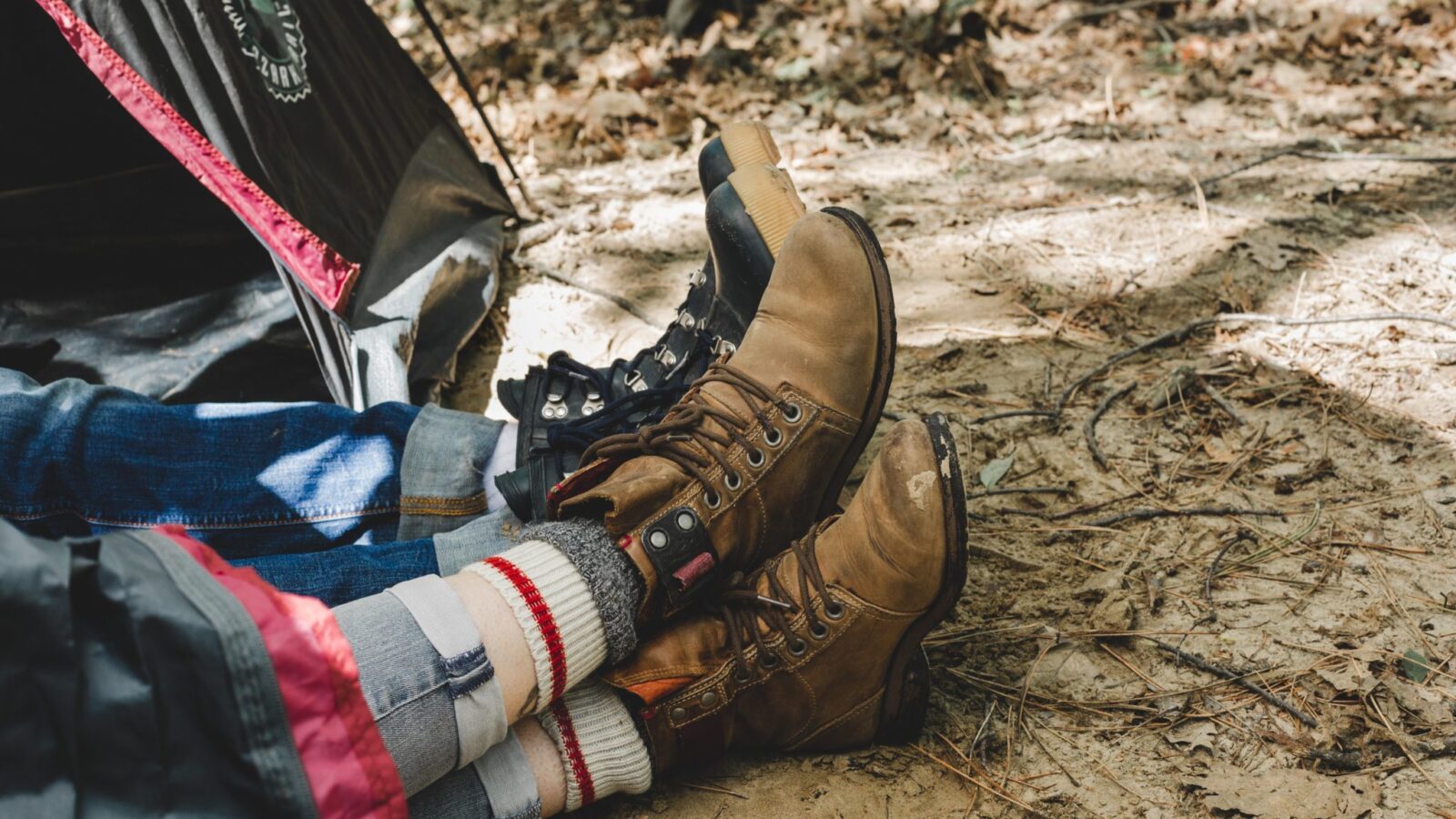Vegan waterproof boots are made by getting creative with materials which don’t include animal products. Leather alternatives, vegetarian glues, and other ethically sourced materials mean we can still get hardwearing, waterproof boots without harm. Not so long ago, vegan-friendly shoes were almost unheard of. But with a greater understanding of our impact on the world today, they have become more and more popular and even some mainstream brands are beginning to listen. Here are some things we think are worth knowing.
Ensuring that your waterproof boots are vegan
This one is easy and applies to regular vegan-friendly shoes as well. While most boots are traditionally made of animal fabrics including suede, leather, wool, fur and silk to name but a few. You can easily confirm that yours are not, before you buy, by checking for the label.
It might seem obvious but I’ve often overlooked this one myself. The label on the boots should read 100% synthetic or all manmade materials.
If it doesn’t and you can’t see this it’s probably because although the boots have a vegan exterior, the interior or outer sole is lined with materials made with animal products.
Some vegan-friendly boots brands that have this on the label include, Xeno shoes, avesu shoes, Dr. Martens, Eco-Vegan Shoes, and Will’s Vegan waterproof boots.
Other areas to watch out for are the glues used and the dyes used to stain the boots. Ensure that the glue that the manufacturer has used in the boots is vegan approved.
Sometimes companies may use glues containing animal products in the making of the boots so it’s always worth checking yourself.
If you’re really not sure about the glues used, you can contact the company who manufactured the boots directly, and they’ll usually be happy to let you know.
Inquire about the dyes used to make them too and about any other other bonding materials. The vegan.com website provides a comprehensive list of vegan shoe manufacturers in their Vegan Boots article.
You could also check that the boots are marked with the Vegan Society Trademark that symbolises that the boots meet the approval of the Vegan Society.

Never coat them with waterproof material
Don’t believe anyone who tells you that vegan boots can’t be totally waterproof. This myth is completely unfounded and may lead you to want to coat your boots with waterproof sprays, wax, or other substances that are not suitable for the materials used.
When you do this, you may cause damage to the material and they might also leave ugly marks on the surface of the boots because they don’t react well to the material.
Checking for Quality Certification
To check for quality vegan waterproof boots you can also keep an eye out for any quality certification. This includes PETA certification.
According to Taylor Wolfram, who is a vegan nutritionist, Nicola Bell manufactures handmade boots and they source their materials ethically and follow fair practices of labor.
Generally materials that can be used to manufacture the vegan shoes include coconut fibers, pineapple fibers, shaven grains and cork, wood, rubber, faux suede, faux leather, jelly, nylons, recycled bottles,
According to an article in nymag.com some of the best vegan boots include The Sydney Brown High Ankle Boot.
Although the shoes are expensive they are really durable considering the wooden heel.
The website places Will’s Vegan waterproof boots for hiking as the best for vegans who love outdoor activities.
The shoes are manufactured with vegan suede and leather and they have a Vibram sole. These shoes can withstand any kind of weather naturally. However, priced at close to $140 at the time of writing this article, they are kind of expensive.
Caring for your Vegan Waterproof Boots
Most vegan waterproof boots can be worn for long periods of time in most adverse conditions and will still ensure that your feet are dry provided you give them the proper care and attention.
Although they rarely get stains or marks when you put them in conditions where there are harsh materials like water, mud, snow among other substances, they will still occasionally need a little TLC.
Faux Leather Boots
Follow the instructions below to clean your vegan waterproof boots made of faux leather.
- Wipe the shoes with mild soap dissolved in warm water using a brush or cloth.
- Dry the shoes using a towel or paper towel.
- Leave them to continue drying naturally. However, never place them near direct heat.
- Apply a suitable polish to brighten the colour and vibrancy of the shoes. However, make sure that you have tested the polish on a portion of the shoes first.
Faux Suede Boots
For vegan waterproof boots made of faux suede use the following instructions:
- Ensure the shoes are completely dry and then brush them well.
- If they are still very dirty, you may wipe with a mixture of warm water and mild soap using a brush or cloth.
- Dry them using a towel or paper towel.
- Let them dry further but don’t place them in a direct heat source.
We recommend checking out the video below by the Vegan Adventurist for her advice on some of the best quality Vegan Waterproof Boots. The vlogger places some of her top 5 vegan hiking boots and some of them are actually waterproof too.
We hope this list was helpful to you and gave you plenty of things to consider when buying your next pair of waterproof boots. Did we cover everything?
If you think I missed something out, please let us know in the comments below.



Leave a Reply